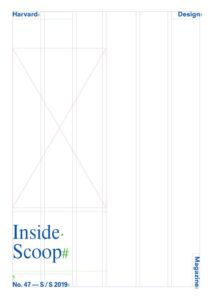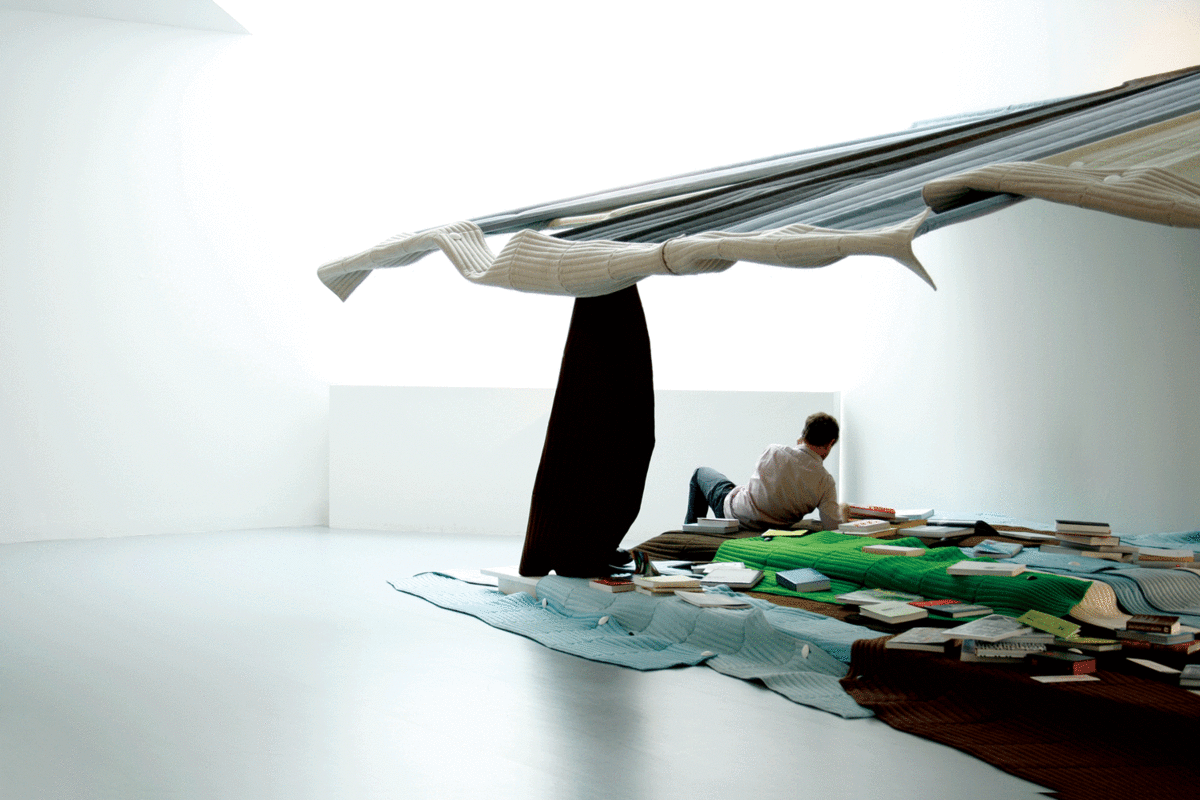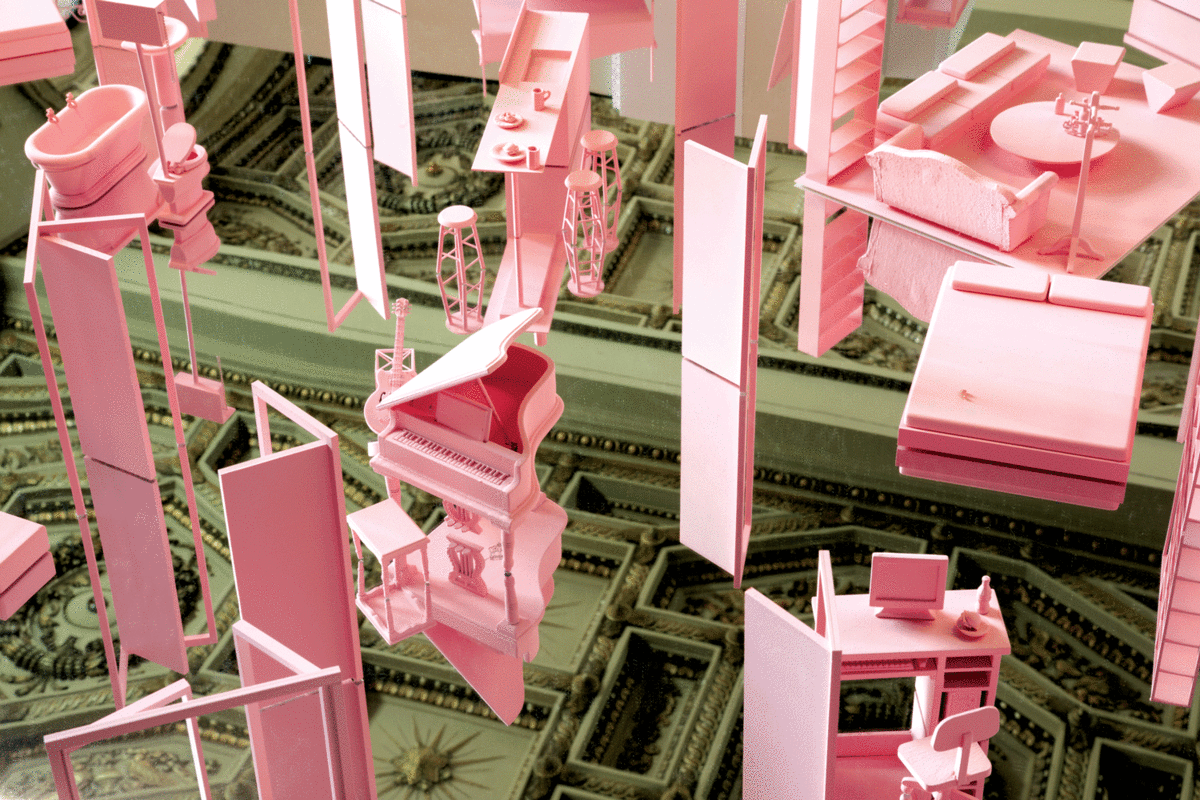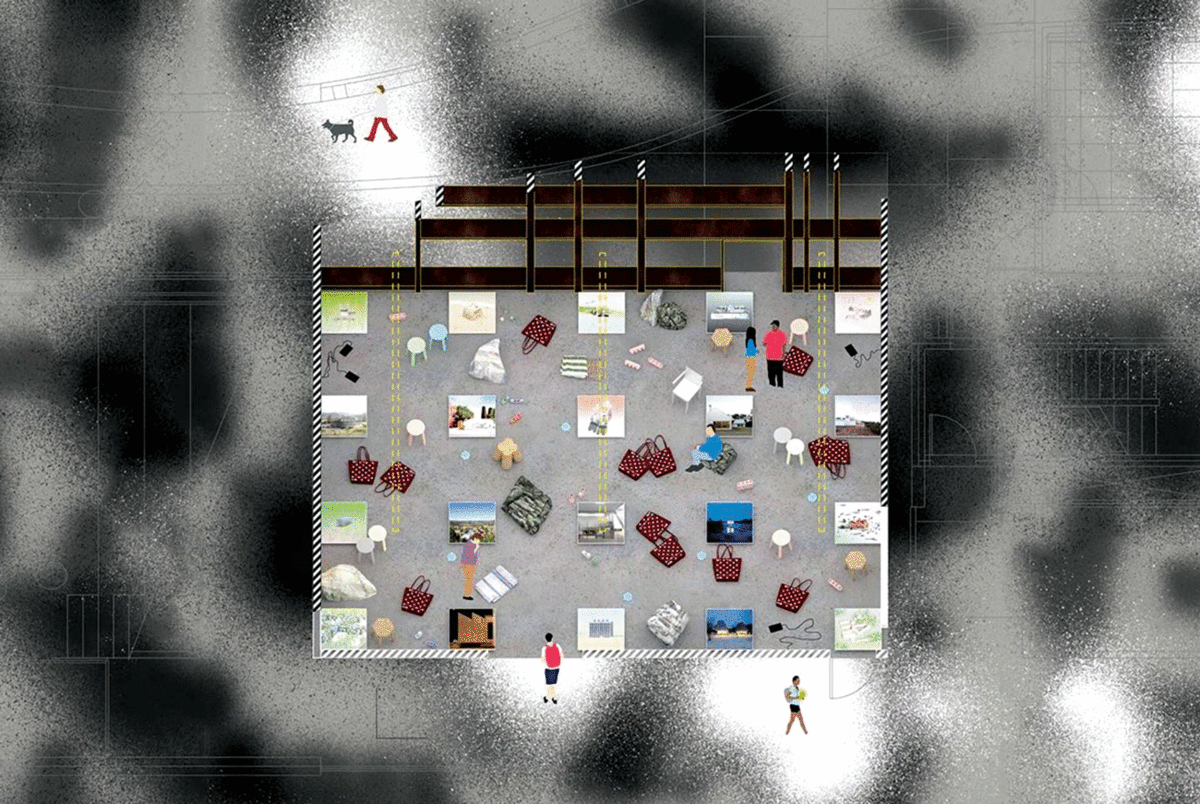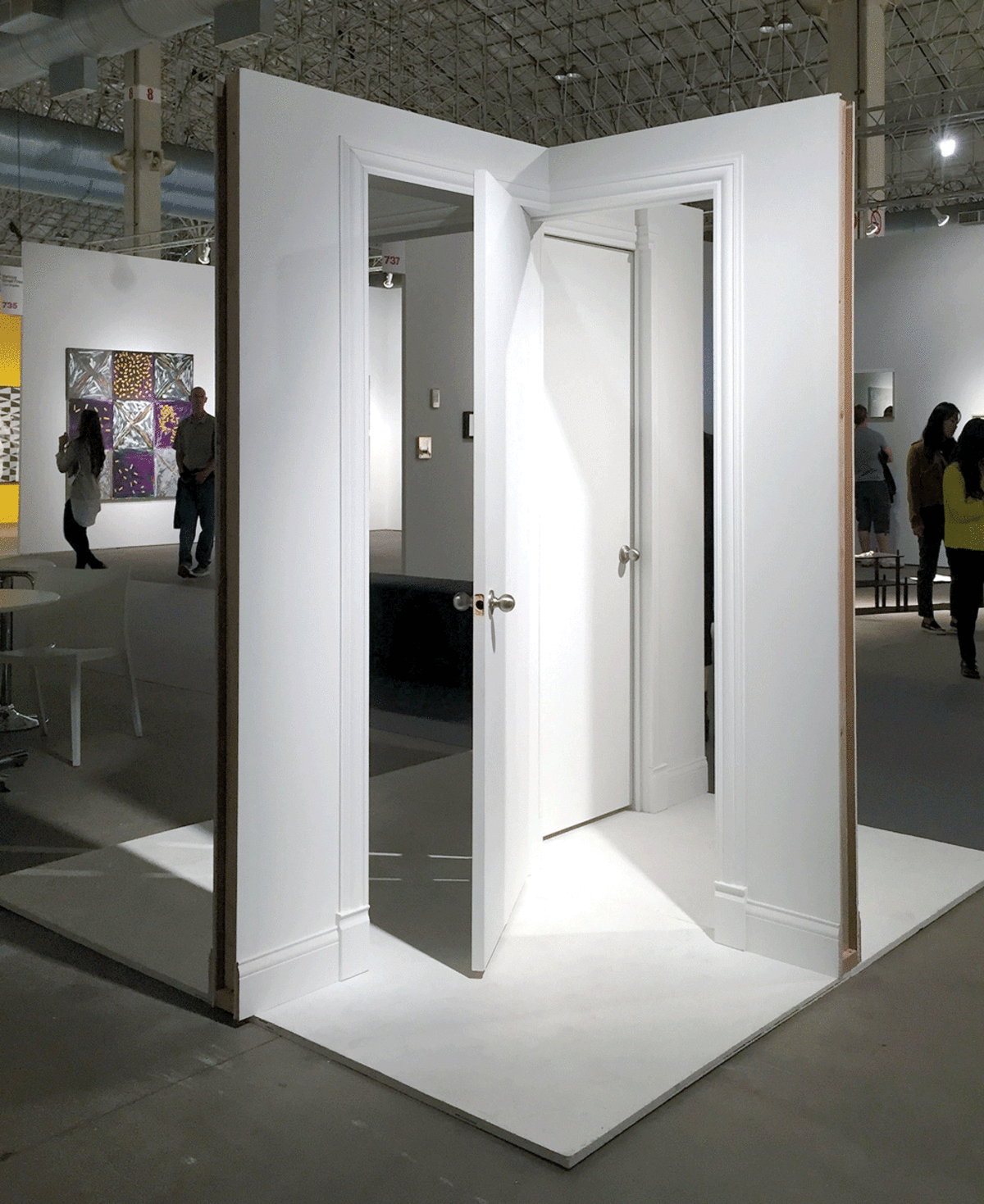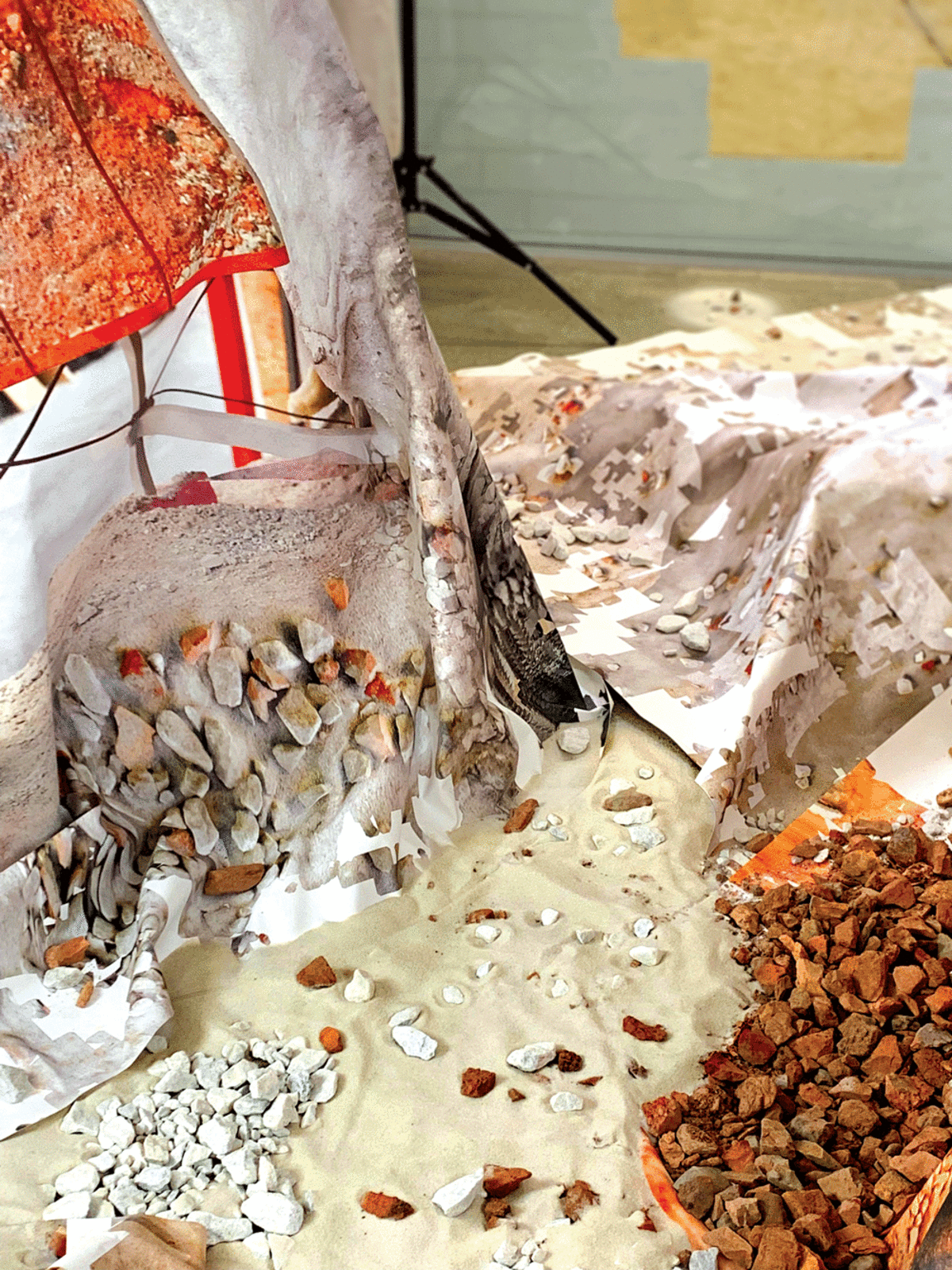Whatever Happened to “Whatever Happened to ‘Whatever Happened to Total Design?’?”
“What does ‘total design’ mean today?” What does it mean, let’s say, after a series of discursive volleys claiming architecture as, on the one hand, a field bent on monomaniacal control and, on the other, one enabling the proliferation of endless, plural difference?
A little history. In “Whatever Happened to Total Design?” Mark Wigley identified modern architecture’s vacillations between two forms of total design: the “implosive design” of the domestic interiors of Frank Lloyd Wright, Charles Rennie Mackintosh, and Henry van de Velde, according to Michael Meredith “in which every little thing is designed”; and “explosive design,” in which “managerial” attention radiates outward à la Walter Gropius from the building to the city to the nation. In a stroke of counterintuition, Wigley reads even the self-proclaimed open frameworks of postmodernism as totalizing fantasies of control, always wont to see the world, like George Nelson’s mechanically reconfigurable house, as malleable only within the clanking machinations of their own industrialized administrative schemes. This gets us to ’round about 1998. In 2008 Harvard Design Magazine published Michael Meredith’s “Whatever Happened to ‘Whatever Happened to Total Design?’?” (see what he did there?), wherein he puts forward Ronan and Erwan Bouroullec’s “loose, small, internal” installations of industrial design objects as an example that escapes Wigley’s proclamation “All design is total design.” The brothers’ neo-nomadic campsites of chairs, blankets, and lamps cannily refused any system of totalization that might jump the bounds of their own work and thereby threaten anyone else’s little island micro-utopia. It was okay to be different. Everything was okay.
So “what happened” another decade on? It is worth noting that the “structure, furniture, wallpaper, carpets, door-knobs, light fittings, dinnerware, clothes, and flower arrangements” Wigley uses to conjure possible objects of attention for his total designers are more or less the literal contents of a Bouroullec installation. For that matter, the list could inventory installations by MOS, WELCOMEPROJECTS, MAIO, or First Office. This is not to smugly taunt that all installations featuring carpets are de facto total design. It is rather to observe that a list written to produce the effect of extension—both in subject matter and in scale “from the teaspoon to the city”—in the reader’s imagination now works literally, quite apart from Wigley’s intention. His list is the actual inventory of the contents of contemporary architectural installations, which, by the way, also happen to be inventories themselves. Both teaspoons and cities make appearances in this contemporary work, mixing so freely in their visual identifications that it is sometimes difficult to tell which is which, although it is certain that both are about the same size as a bread box. All things big and small are now shrunk down to the scale of models, rendered manageable, numerable, subject to beautiful arrangements on tables or across floors. The dictum “all design is total design” must be rewritten as “all design is interior design,” insofar as models are housed indoors and produce an additional sense of interiority when scattered and clustered together in close proximity. Measures of difference no longer apply to this situation. The horizontal distinction between a big spoon and a little spoon is as irrelevant as the vertical differentiation between carpets and doorknobs. Everything fits, so why bother measuring? If something is to be measured, it is instead a question of representational degree. How many dislocations away from an original inventory does each of these installations purport to be? Zero. This is the age of the Zero Degree Project.
The defining characteristic of the Zero Degree Project is a mirroring of the design brief. You want a chair? Here’s a chair made from drawings of chairs. You want a painting? Here’s a painting
of the studio where the painting was painted. The representational mechanism is so facile that it occasionally stutters and overproduces, opening en abyme in a way that transmutes mere reproduction into the quarried glint of raw material. You want a door? Here are two (see First Office’s re-creation of Duchamp’s Door: 11, Rue Larrey [1927], Duchamp’s Shotgun [2015]). You want an architectural exhibition? Here’s a storefront for Storefront (see PARA Project’s Storefront for Storefront [2016]). A house? Here’s a house made of houses (see MOS’s Element House [2014]). Rocks? Here’s a model of rocks made of pictures of rocks mapped on shapes of rocks (see T+E+A+M’s Model on View [2019]). Responding always with an affirmative echo of the task at hand allows the designer to reappear on the scene modestly, honestly, and as a dealer in the real. Modestly because the project is put forward as maximally economical, requiring only the conceptual material furnished by the text of the commission itself. Honestly because representation is put to work as a mirror reflecting back the request made by the commission, effacing almost completely individualized signatures, caprice of invention, or even the irony of mirroring, which now becomes only more evidence of authenticity. And, above all, the work is real because, even when lies are required in models or renderings, the projects openly bare signs of their own artifice, highlighting the props holding papery thin walls, showing the World Coordinate System icons of viewport space, reprinting contracts that detail the circumstances of the commission, and posting specification manuals.
Students of mirrors already know that the real project of reflection is not to accurately reflect, but instead to capture and project into a scene that the designer has already prepared. In their most operatic extremes, they cast their reflections into an allegorical fantasy à la the mirrored cabinets of the late Baroque. But the subtler operation of the Zero Degree Project should not be confused with such an explicit narrative construction of ideology. The affective identification of the author as modest, honest, and real is merely the soft overture of “Don’t be afraid, we’re real” (and, from here on, having been captured by the mirror, we can only speak in the plural) within a larger project of audience solicitation that is operationalized in harder terms by the formal invention of the setting. Settings convert the mirroring of the commission into a zone of ever-expanding inclusion that overruns the viewing subject. The setting is the white-ness of the gallery in the Bouroullecs’ installation that smooths out distinction between the horizontal surface of the floor and the vertical surface of the wall in real space while at the same time blowing out portions of the printed image so dramatically they leak onto the whiteness of the printed page. It extends unobstructed across space, media, and format. While there is no limit to its lateral extension, the setting is not undifferentiated; it furnishes a structured ground that holds together the sense of the one-to-another relation that gives each object in the inventory a logic of proximity to its neighbors despite their differences in kind or in their spatial arrangement. The fabric is propped into position by the whiteness at its right edge to become the “roof” of a “hut,” which, in turn, sets up primitive ordinal distinctions between up and down, inside and out, rendering domestic and carpet-like all the bits scattered “beneath.”
Usually in solid colors, but also found as grids, websites, matrices of hanging pictures, floors, and homogenous materials, these structured grounds float their inventories in an infinitely protean, imminently Photoshop-able substrate that can change color, change location, and change medium without any consequence to the logic that holds things together. Little fragments reminiscent
of Archizoom’s No-Stop City (1969) now re-create the entirety of the scheme by implication, without going to all the work of actually inscribing an infinite grid on the surface of the planet. There is no limit to the geographic location or scale of this ground, which serves as universal green screen. It is in the project; it is in the gallery; it is under my feet. The viewing subject has always already been cast as a character in the scene. There we join others in a world of familiar things not so different from the one we left behind. (It’s no surprise that contemporary work has again found a love for entourages and representations of the human figure as the omnipresent accessory to drawing.)
This is not to say that all Zero Degree Projects are the same. They range from the “discrete, playful, and ephemeral” in the case of the Bouroullec brothers, to blank, serious, and enduring in the case of the First Office re-creation of Duchamp’s work. And while this description would seem to draw a distinction between the two simply on the basis of familiar aesthetic categorizations, consider that the sense-making mechanisms at work in both are the same. Both lean heavily on the setting to structure and order the appearance of what would otherwise be a free fall of non sequiturs: the Bouroullecs’ installation uses the white of its photo set to pressurize and array its contents toward something like an interior, while the First Office door uses the blank space of the gallery to structure and attune the attention of its audiences to the possibility that a displaced fragment of a Type V construction is a “work” of either art or architecture.
Arrayed on a spectrum from the whimsical to the blank, the more substantive distinction between these two projects lies in the labor roles that are assigned to the subjects mirrored within their domains. At one end of this continuum, architecture evidences the logic of its own proliferation, offering the task of production as the sheer, monomaniacal joy, democratically available to anyone who wishes to make houses out of houses or mountains out of rocks out of rocks. Go forth and multiply. At the other end, the architecture sets its subjects to work clearing a little patch. The imperative is to clean up, clear out, do less, and notice, notice, notice, with sensory equipment attuned by the purge to ever-finer gradations of white. In both cases the denizens of the real world are included in the almost-real mirror world on the basis of their ability to participate by dint of getting to work.
The politics of these projects are beautifully hopeful in that all subjects are projected into the same world. The wild proliferation of difference in our inventories is, in fact, the machinery that helps to homogenize the collective’s imagination of itself. “See,” it says, “you belong too. You have always already belonged.” The extensible structure of each project imbricates its neighbors. Together, they imagine a plane of possibility on which all are welcome—and all are already there. This is not the proliferation of micro-utopias, but the consolidation of all possibles into a singular, agglutinated mega-utopia. It is maybe the only reasonable design response to horrors of a Trumpian politics bent on factional division and the incredible energies expended toward maintaining ideological incompatibility. If there is a downside, it is in the conversion of open potentiality into the merely possible that Theodor Adorno so loathed. That is to say, our work does not enable a field of free, individualized difference. Instead, it includes everyone to the exact extent that the imagination of what we might do together is reduced to a set menu of possible tasks, perhaps limitless in number but constrained by the combinatorics of rearranging the known. It is not a projective future, but an eternal present.
“Total design is everywhere.” It is seductive but never elusive.
Andrew Holder is coprincipal of the LADG (Los Angeles Design Group) and assistant
professor of architecture at the Harvard University
Graduate School of Design. Holder’s recent work
has been published in Young Architects, Log,
Pidgen, and Project.
